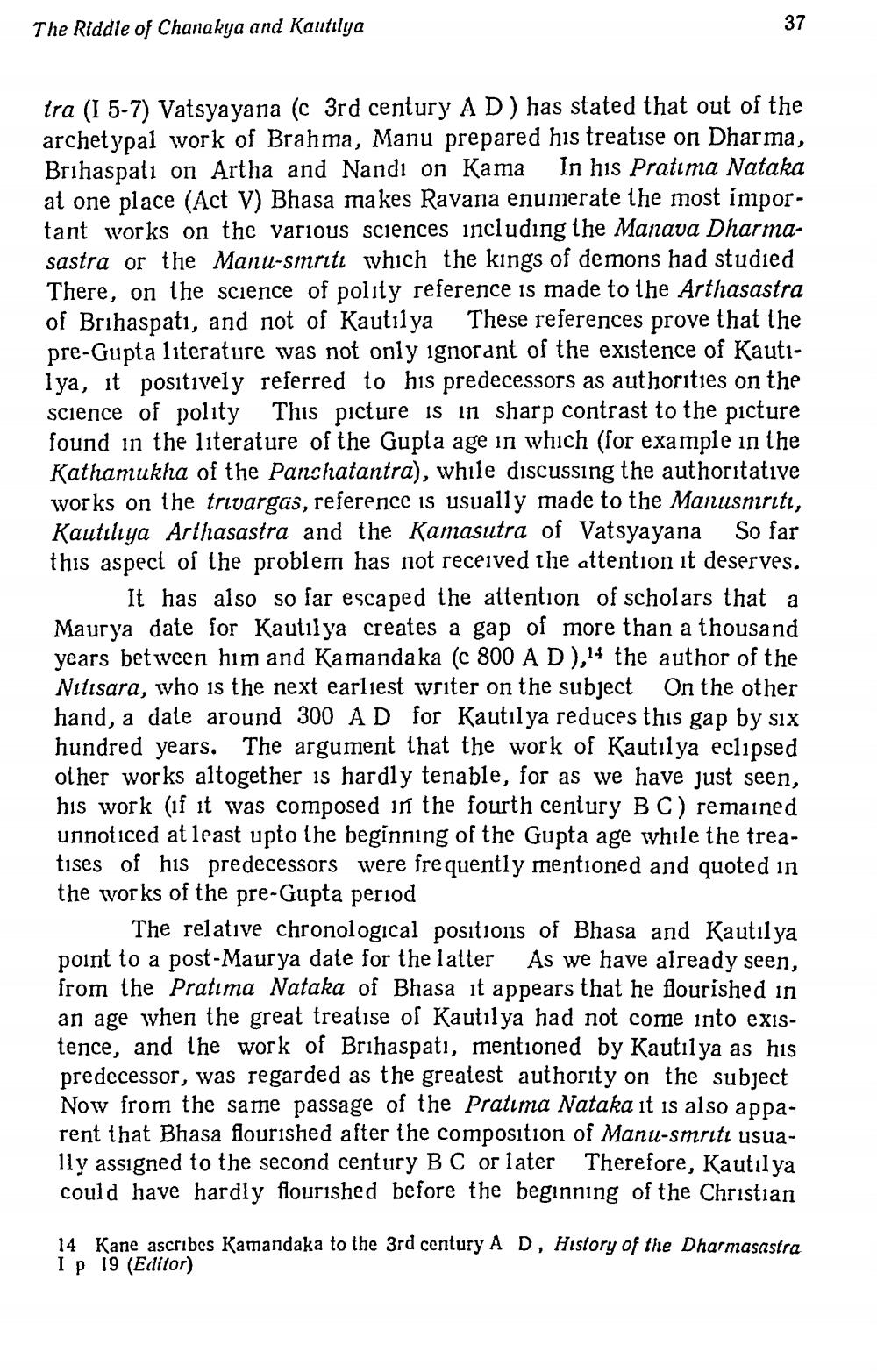________________
The Riddle of Chanakya and Kautilya
37
tra (1 5-7) Vatsyayana (c 3rd century AD) has stated that out of the archetypal work of Brahma, Manu prepared his treatise on Dharma, Brihaspati on Artha and Nandi on Kama In his Pratima Nataka at one place (Act V) Bhasa makes Ravana enumerate the most important works on the various sciences including the Manava Dharmasastra or the Manu-smritt which the kings of demons had studied There, on the science of polity reference is made to the Arthasastra of Brihaspati, and not of Kautilya These references prove that the pre-Gupta literature was not only ignorant of the existence of Kautilya, it positively referred to his predecessors as authorities on the science of polity This picture is in sharp contrast to the picture found in the literature of the Gupta age in which (for example in the Kathamukha of the Panchatantra), while discussing the authoritative works on the trivargas, reference is usually made to the Manusniriti, Kautılıya Arthasastra and the Kamasutra of Vatsyayana So far this aspect of the problem has not received the attention it deserves.
It has also so far escaped the attention of scholars that a Maurya date for Kautilya creates a gap of more than a thousand years between him and Kamanda ka (c 800 AD),14 the author of the Nitisara, who is the next earliest writer on the subject On the other hand, a dale around 300 AD for Kautilya reduces this gap by six hundred years. The argument that the work of Kautilya eclipsed other works altogether is hardly tenable, for as we have just seen, his work (if it was composed in the fourth century BC) remained unnoticed at least upto the beginning of the Gupta age while the treatises of his predecessors were frequently mentioned and quoted in the works of the pre-Gupta period
The relative chronological positions of Bhasa and Kautilya point to a post-Maurya date for the latter As we have already seen, from the Pratima Nataka of Bhasa it appears that he iourished in an age when the great treatise of Kautilya had not come into existence, and the work of Brihaspati, mentioned by Kautilya as his predecessor, was regarded as the greatest authority on the subject Now from the same passage of the Pratima Nataka it is also apparent that Bhasa flourished after the composition of Manu-smriti usually assigned to the second century B C or later Therefore, Kautilya could have hardly flourished before the beginning of the Christian
14 Kane ascribes Kamandaka to the 3rd century AD, History of the Dharmasastra Ip 19 (Editor)




